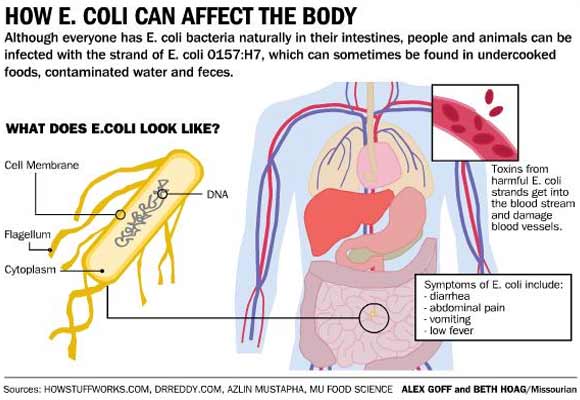“FAT TOM” is a mnemonic device used
to represent the six conditions that support bacterial foodborne growth. “F”
stands for food. Foodborne bacteria needs carbs and proteins to grow. Foods
like meat, eggs, fish, and dairy products are potentially hazardous for harvesting
bacteria because bacteria grow quickly in moist areas. Bacteria is always
present in food.
“A” stands for acidity. The pH scale measures how acidic or alkaline something is. It ranges from 0-14. If a
food has a pH between zero and 6.9 it is acidic. If it stands at 7.0 exactly,
it is a neutral food. Bacteria like to grow in a slightly acidic pH, which is a
pH between 7.5 and 4.6. Vinegar, pickles, and citrus fruits are acidic and can
kill bacteria because of its acidity. Foodborne bacteria typically does not
grow in alkaline foods like crackers.
“T” stands for temperature. Foodborne
bacteria grows well between 41 degrees and 135 degrees Fahrenheit. If it is
extremely cold, bacteria will not grow, and if conditions are extremely hot, bacteria
will be killed. That is why we refrigerate foods, to slow the growth of
bacteria and preserve the food. (There are some bacteria that grow regularly in
cold temperatures, it just depends). You should be careful with your food while
cooking it after it is frozen to ensure that these bacteria do not infect your
food.
The second “T” stands for time. Foodborne bacteria needs time to grow. If a
food is in a bacteria’s growing temperature for longer than four hours, it will
have grown enough to cause illness.
“O” is for oxygen. Aerobic bacteria
require oxygen to grow. Anaerobic bacteria do not require oxygen to grow, like
the bacteria in our gut, or the bacteria at the bottom of a soil ecosystem.
Foods like cooked rice and baked potatoes have been associated with types of
bacteria that grow without oxygen. Foods preserved in cans and jars limit the
amount of oxygen exposed to bacteria, also limiting their growth.
“M” is for moisture. As said above,
most bacteria requires moisture to grow. The amount of moisture in food is
called water activity. Potentially hazardous foods have a water ativity of .85
or higher. Foods that are kept dry or preserved with salt and sugar deprive
bacteria of water. This water activity is measured on a scale from 0.0 to 1.0,
with water having the value of 1.0.




